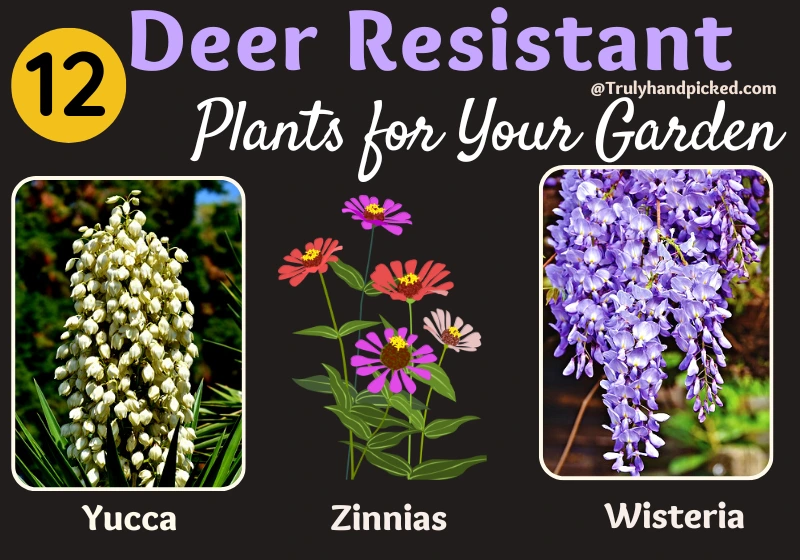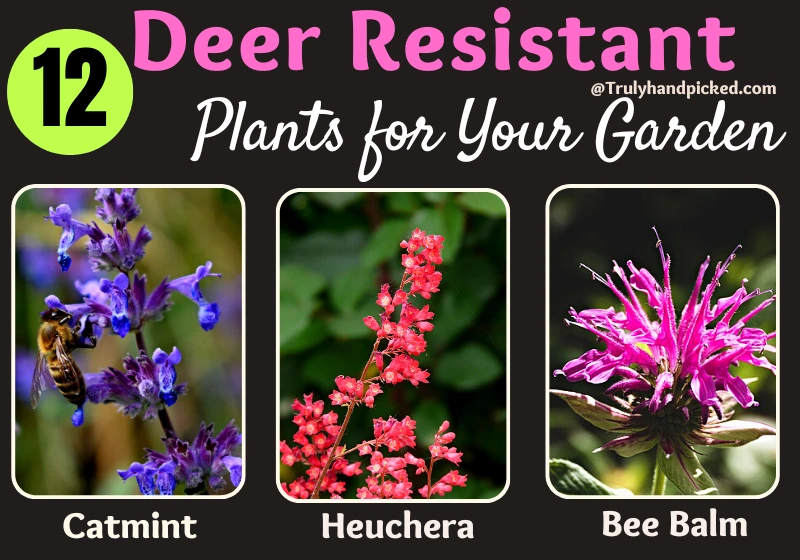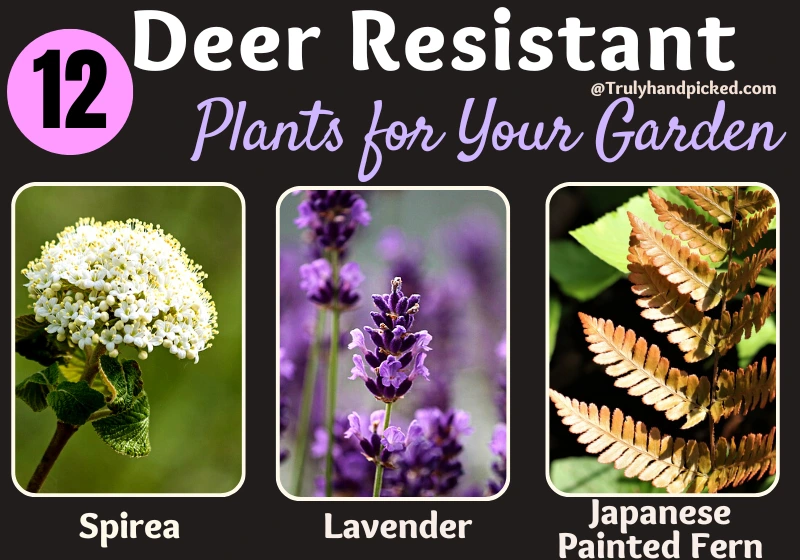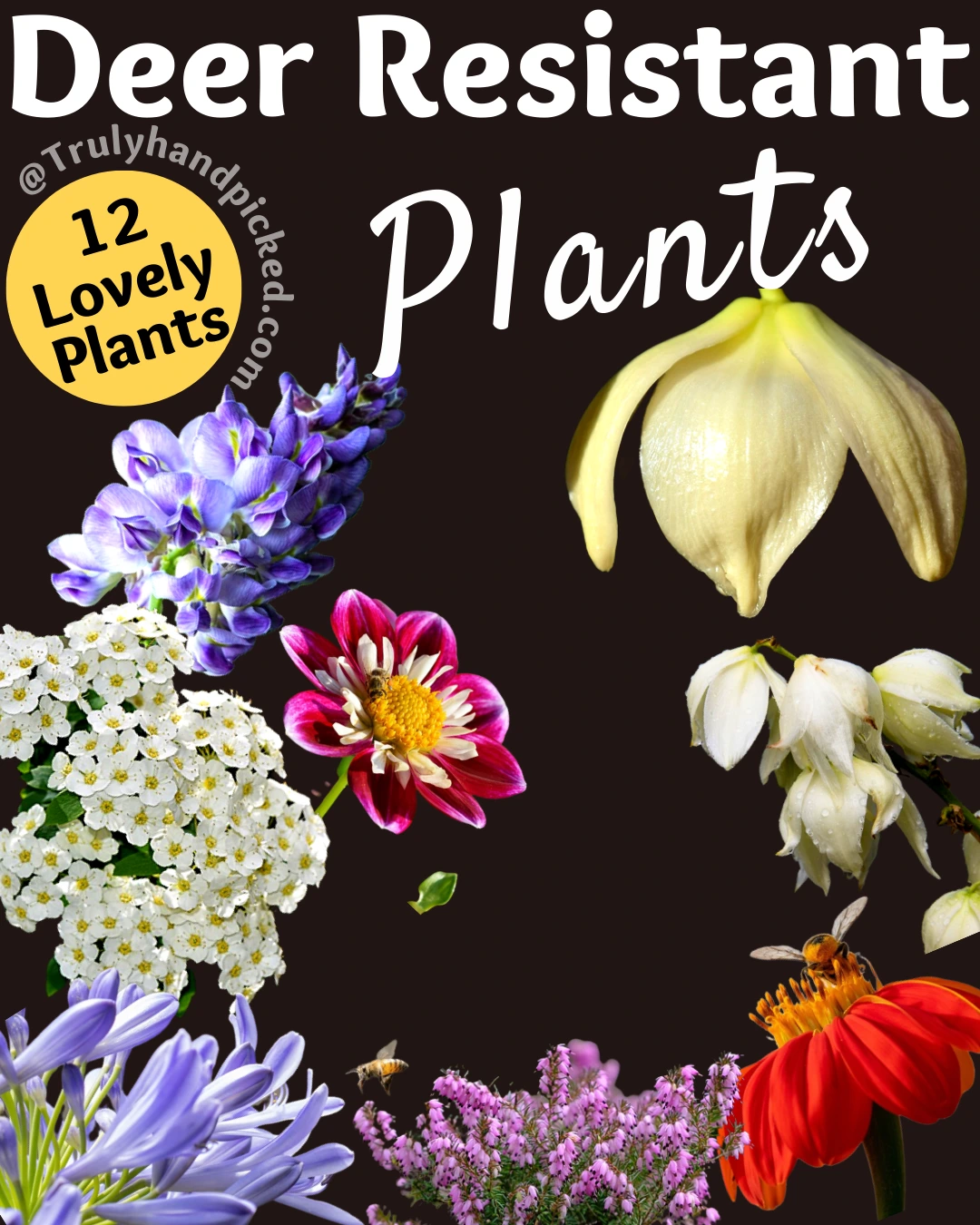Deer don’t like high-fragrant plants or herbs. They tend to avoid them, whenever one of those plants comes across their path. These plants are generally known as deer-resistant plants, which may beautify and fill your yard outstandingly but surely give gnaw to your nearby four-leg friends like deer.
However, some find this even helpful though, to get the animal repellent quality through these high-fragrant plants. So, if you want to get the benefits of such natural deer-proof plants with the divining perfumes, try to cultivate these brilliant flowering plants and herbs in your yard quickly-
Deer Resistant: Plants That Deter Deer Away From Your Garden
Description:
Rosemary is an ornamental herb. It can adorn your garden with an exclusive greenery view along with enhancing your culinary skills. This perennial can grow up to 6 ft. tall and 2-4 ft. widespread.
Caring Tips:
- Place your plant in a sunny spot with full sun exposure
- Keep the soil acidic and well-drained with sandy or loamy quality
- It is drought-tolerant thus weekly watering will be enough
- Keep the temperature moderately warm and feed monthly
Blooming Session: Spring and summer
Just like other fragrant herbs, deer don’t like rosemary’s fragrance, its sweet aroma is intolerable for deer.
Related: Fragrant plants that repel flies

African Lily:
Description:
This plant grows strap-like foliage that bursts into a succession of blossoms later. The pretty bluish flowers appear amazing around green leaves when bloomed in a cluster. This perennial bulb plant can grow up to 25-30 inches in height.
Caring Tips:
- Sow your plant in rich and moist well-drained soil with a neutral pH balance
- Place your plant under bright indirect light
- It prefers moderate watering like 1-inch per week
- Make the compost-rich during the plantation and feed monthly with weak liquid fertilizer
Blooming Session: Winter
Heather:
Description:
Heather is a woody perennial high-fragrant plant that produces catchy flower stalks in a pinkish tint around sleek fern-green foliage. It can provide a mesmerizing landscaping view when cultivated in a row. It grows bushier more comparing their length.
Heathers are also good for windy gardens as a good wind-tolerant plant. And not just deer, heathers are not damaged by most animals. Yes, they are rabbit resistant too.
Caring Tips:
- Use sandy, moderately rich, and acidic soil to sow your heather plants
- You can place them anywhere under full sun to the sun with partial shade
- Keep the watering schedule moderate like one inch per week
- Grow your heather plant in a moist and cool climate with organic fertilization only
Blooming Session: Mid-summer to early fall

Description:
Yucca is one of the mentionable options in this list that produces sharp, spiky, frond-like leaves with white flower stalks in the cluster. It can grow up to 30 ft. tall with a 10-15 ft. spread when matured fully.
As yucca plants have pointed spiky leathery leaves it is good to deter deer away from your garden
Caring Tips:
- Sow your plant in a spot under the sun with partial shade
- Choose, sandy, well-drained soil with a neutral pH level to plant your yucca
- Water your plant once a week only during hot climates and reduce it during winter and fall
- Feed your plant with a commercial liquid fertilizer during the peak seasons
Blooming Session: Summer and fall
Zinnias:
Description:
If you want to decorate your yard with vibrant flowers along with a nice fragrance then, zinnias are the best option to pick. It is a fast-growing annual flowering plant that blooms bold and beautiful blossoms with high fragrance around pointy green foliage.
There are also known for attracting butterflies to your garden.
Caring Tips:
- Put your plant under full sun and water only once every 2-3 weeks
- Sow your zinnias in well-drained and moderately rich soil with neutral pH
- It prefers a hot climate with low-to-medium humidity
- You can try occasional feeding with a well-balanced all-purpose fertilizer
Even if the deer is hungry don’t nibble the bright flowering zinnias (As of what we have seen till date).
Blooming Session: Late spring through early winter
Wisteria Flowering Vines:
Description:
Wisteria is a woody vining plant that blooms bluish to purplish flowers in bunches. These deciduous perennial climber plants can grow up to 25 ft. tall with a wide 87-8 ft. of spread when got proper trails.
Deer won’t go near these vines and prefer not to eat the sweet flowers.
Caring Tips:
- You can place the plant under full sun to the sun with partial shade
- Pick a soil type that can drain well with a slightly acidic pH level
- Make hydrate your plant weekly with an average 1-inch per week watering
- And feed your plant with a high-phosphorus and low-nitrogen fertilizer monthly
Blooming Session: Early May

Catmint:
Description:
Catmint (Catnip) is another flowering perennial deer-repellent plant that produces purplish flower stalks with a deep minty fragrance. It grows foliage with a unique silvery tint over the green surface. You can grow them easily as ground cover due to their moderate growth which is around 12-24 inches hardly.
This hardy plant can be planted as a border to deter deer away from your garden.
Caring Tips:
- Your plant can tolerate both full sun exposure to the sun with partial shade
- Sow your catmint plant in well-drained soil with an acidic to the neutral pH level
- Water your plant every 2-3 days for the first year and then reduce it to once a week
- Feed your growing catmint with compost, once a month during the flowering season
Blooming Session: Spring and Summer
Heuchera (Coral Bells):
Description:
Heuchera or coral bells plants seem enthralling while grown in an open yard. The specialty of this perennial species is that some varieties produce colorful foliage in several bright tints including purple, green, gold, lime green, rose, etc. It can grow up to 10-18 inches long with a wider 24 inches spread.
Though Coral bells come in different attractive colors to make your landscape beautiful, this flowering shrub is not on the list of deer’s favorite foliage.
Caring Tips:
- You can place your plant under full sun to the sun with partial shade
- Sow the plant in rich, well-drained, and moist soil with a slightly acidic pH level
- Watering your plant weekly but let the soil dry between watering
- Provide your plant moderately warm climate with monthly slow-release fertilization
Blooming Session: Spring through summer
Bee Balm:
Description:
Bee balm is one of those plants that attract pollinators to your yard naturally. This herbaceous perennial plant blooms high-fragrant flowers with a profuse hairy-cluster pattern. Plants can grow up to 4 ft. tall with 2-3 ft. a spread.
Though it attracts pollinators with its scent, it’s the opposite for deer. As deer don’t like the spiky mint fragrance.
Caring Tips:
- Sow your plant under full sun to the sun with partial shade
- It prefers rich, moist soil with an acidic to neutral pH balance
- Water your plant once a week with deep watering and use mulching often
- To keep the soil constantly moist, you must maintain a climate that is moderately warm with high humidity
Blooming Session: Summer

Spirea:
Description:
Spirea is a perennial shrub that produces a cluster of bright pinkish blossoms like lilac or hydrangea plants. It is a deciduous flowering shrub that can grow up to 20 ft. tall relying on caring methods and selective species.
Deer don’t like the strong taste and smell and thorny plants. Spirea secretes salicylic acid may be that keeps the deer from damaging these plants
Caring Tips:
- Place this plant under full sun and water only when the soil seems dry
- Pick fully amended soil with well-drained quality and a neutral pH level
- This plant is winter-hardy and thus can tolerate the coolest climate easily
- Feed your plant once annually with a slow-release fertilizer in diluted form
Blooming Session: Spring and Summer
Lavender:
Description:
Lavender is a popular high-fragrant perennial shrub with heavy medicinal value. It produces grey-green foliage with bright purplish flower stalks that bloom upright. The herbaceous plant can grow up to 3 ft. tall a 3-4 ft. widespread.
Caring Tips:
- Put your plant under full sun and water every 2-3 weeks once established fully
- Use lean, well-drained soil with alkaline pH to grow your lavender plant for long
- Place your plant in a spot where it can grab warm temperature with good airflow
- Feed your plant with compost annually to keep the blooming capacity consistent
Blooming Session: Summer
Deer don’t go near lavenders because of their strong scent. Yes deer won’t like fragrant blooms
Japanese Painted Fern:
Description:
Japanese painted Fern is a decorative plant with a nice fragrance from the Athyrium family. It produces triangular silvery leaves in fronds-style with a catchy purplish mid-rib. It can thrive up to 18 inches tall with a similar spread and thus grow best as ground covers.
These ferns are low in maintenance, pest free, and unpalatable for deer
Caring Tips:
- Place your plant in a spot under the sun with partial shade and a moderately warm temperature
- Pick moist but well-drained rich soil with a neutral pH level
- Keep the soil evenly moist all the time with a weekly watering schedule
- And feed your plant with homemade compost tea once a month
Blooming Session: It never blooms.
